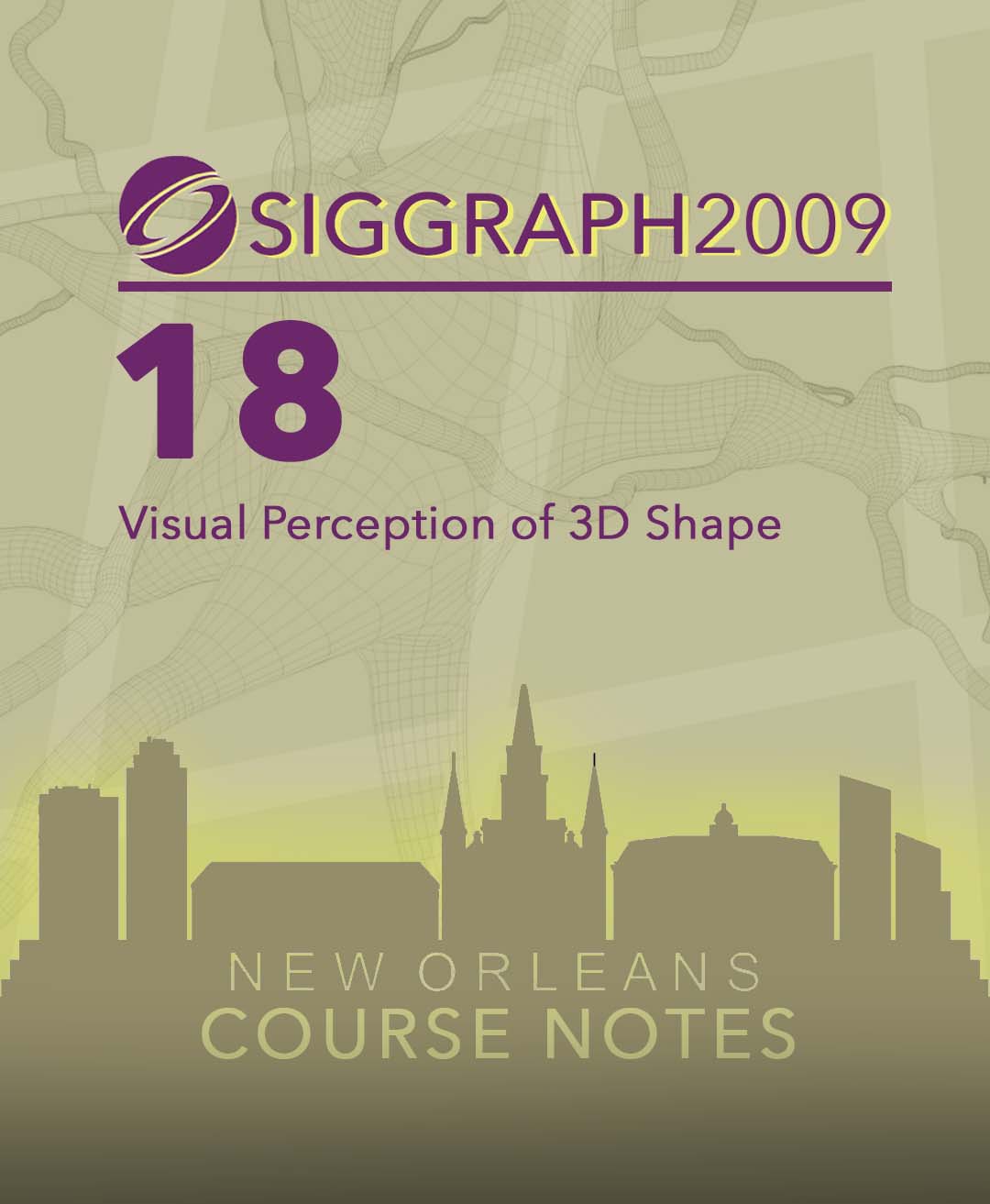“Visual Perception of 3D Shape” by Fleming and Singh
Conference:
Type(s):
Entry Number: 18
Title:
- Visual Perception of 3D Shape
Presenter(s)/Author(s):
Abstract:
Description
The human brain has the remarkable ability to turn 2D retinal images of an object into a vivid perception of the object’s 3D shape. Mathematically, this should be impossible, and yet we do it effortlessly whenever we open our eyes. How does the brain achieve this? This course presents a number of key findings from the study of human visual perception of 3D shape. It shows how different sources of image information such as contours, texture gradients, shading, and optic flow each contribute to the reconstruction of 3D shape by the human visual system. The course also summarizes what happens when 3D shape perception fails, leading to some cool illusions, and describes current ideas about how 3D shapes are parsed and represented, and relates these ides to theories of 2D shape encoding. Throughout the course, connections will be made to common practices in the artistic depiction of 3D form. The course concludes with a discussion of how an understanding of human shape perception might be leveraged to enhance 3D shape visualization in photorealistic and non-photorealistic rendering. This course should be of interest to graphics researchers and practitioners who want to understand the portrayal of shape and, more broadly, anyone who is curious about human vision.
The human brain has the remarkable ability to turn 2D retinal images of an object into a vivid perception of the object’s 3D shape. Mathematically, this should be impossible, and yet we do it effortlessly whenever we open our eyes. How does the brain achieve this? This course presents a number of key findings from the study of human visual perception of 3D shape. It shows how different sources of image information such as contours, texture gradients, shading, and optic flow each contribute to the reconstruction of 3D shape by the human visual system. The course also summarizes what happens when 3D shape perception fails, leading to some cool illusions, and describes current ideas about how 3D shapes are parsed and represented, and relates these ides to theories of 2D shape encoding. Throughout the course, connections will be made to common practices in the artistic depiction of 3D form. The course concludes with a discussion of how an understanding of human shape perception might be leveraged to enhance 3D shape visualization in photorealistic and non-photorealistic rendering. This course should be of interest to graphics researchers and practitioners who want to understand the portrayal of shape and, more broadly, anyone who is curious about human vision.
Level: Introductory




